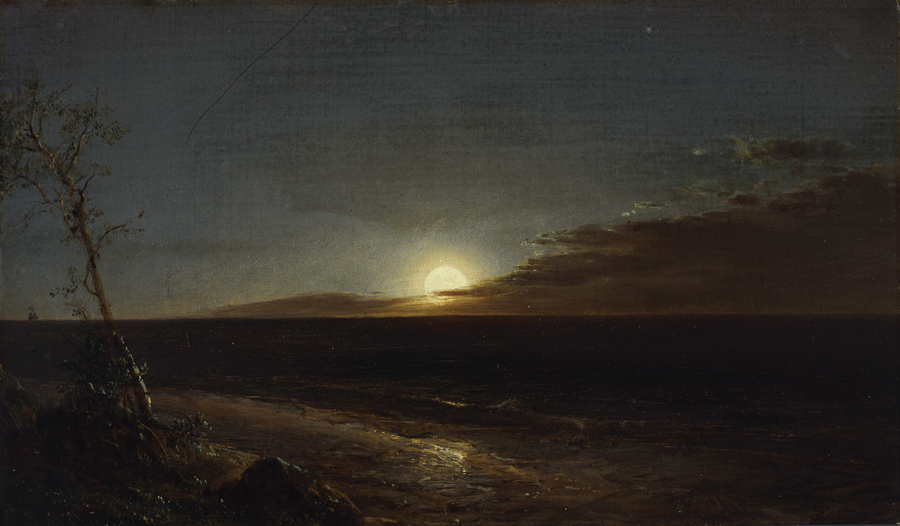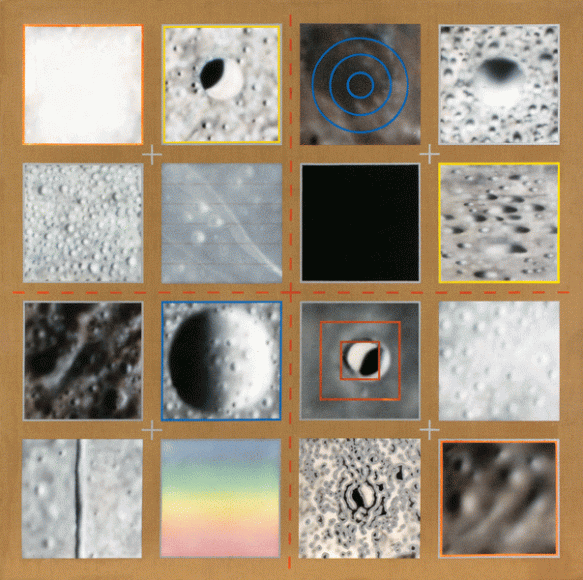These days we can all be forgiven for going a bit loony over la bella luna. The 50th anniversary of Neil Armstrong’s “one small step for man, one giant leap for mankind” has virtually everyone anticipating moon parties on July 20 under the sign of Cancer (which is governed by you know what).
The Hudson River Museum in Yonkers has a particular connection to Apollo 11’s historic lunar landing: It was also 50 years ago that the multidisciplinary museum launched its planetarium. Now the museum is set to celebrate both as well as its centennial with an exhibit that plumbs our fascination with Earth’s only satellite and the relationship between art and lunar science.
“The Color of the Moon: Lunar Painting in American Art” (Feb. 8 through May 12) features 60 paintings and works on paper, along with a range of programming that explores the moon’s pull on our creative rhythms.
“The prevalence of the moon in American art speaks to its universal appeal,” says Laura Vookles, chair of the Hudson River Museum’s curatorial department, who organized the show with Bartholomew F. Bland, executive director of the Lehman College Art Gallery, The City University of New York. At the same time, she adds in a statement, “it is something that unites us across the globe. This attraction was explored by generations of artists who gazed upon the moon and later reaffirmed by astronauts looking back upon the fragile Earth from space. Visitors will be awestruck by these views and by the beautiful paintings on display.”
Viewers have long been mesmerized by the moon, with the earliest images perhaps dating from 5,000-year-old Irish rock carvings. In ancient Sumer in southern Mesopotamia — modern-day Iraq and Kuwait — the moon was thought of as a male deity, Nanna, while in ancient Greece, the moon was Selene, later Artemis and then the Roman Diana — goddess of the hunt and twin sister of Apollo — whose light caressed the beautiful shepherd Endymion as he slept unaware. Such duality has always been part of the moon. It is the “man in the moon,” whose face gazes back on us when the moon is full, and the cycles of female fertility, represented by the opalescent orb’s waxing and waning.
It is the sphere of romance — the stuff of countless songs and movies, from “Moonglow” to “Moonstruck” — but it also has its dark side, the place of howling werewolves and madness. The words “loony” and “lunatic” come from luna, Latin for “moon,” and there are still those today who swear that a full moon brings out the crazy in all of us.
The exhibit captures myriad shades of Earth’s satellite, from the serene — Childe Hassam’s moon-dappled seascape “Isles of Shoals” — to the sinister — George Inness’ “Winter Moonlight (Christmas Eve.”
The exhibit is arranged in three sections: “Popular Moon from Myth to Destination,” ranging from mythological scenes of the goddess Diana by Samuel F.B. Morse to the Apollo 11 blast-off, painted by Jamie Wyeth as part of NASA’s art program; “The Romantic Moon From the Hudson River School to 20th-Century Modernists,” featuring Albert Bierstadt’s rosy “Western Landscape — Deer Wading” and a radiantly abstract “Moon” by Arthur Dove; and “The Moody Moon From Forest Glades to the Open Sea,” with paintings by Inness, Edward Bannister and Ralph Blakelock that illuminate the deep preoccupation that linked spirituality and moonlight at the end of the 19th century.
Other featured artists include Susie M. Barstow, Oscar Bluemner, Charles Burchfield, Frederic Edwin Church, Joseph Cornell, Jasper Francis Cropsey, Sanford Robinson Gifford, Winslow Homer, Roy Lichtenstein, Norman Rockwell, Edward Steichen and Marguerite Thompson Zorach.
But the exhibit and the accompanying catalog are just the beginning of the museum’s trip to the moon. Think planetarium shows, a film series collaboration with Alamo Drafthouse Yonkers, talks on the moon in classical art and in the works of Inness and Rockwell, a first-time Lunar New Year event on Feb. 24; and a live radio play, “The Flying Cloud and the Star-Filled Sky.”
There will be a moon festival, steampunk-style on March 24; a celebration of Yuri Gagarin, the first man in space, April 12; and a Sky and Earth Day event April 20.
Following its run at the Hudson River Museum, the exhibit will travel in June to James A. Michener Art Museum in Doylestown, Pennsylvania, which is partnering with the Hudson River Museum on the exhibit.
“As we celebrate our centennial,” Hudson River Museum director Masha Turchinsky said in a statement, “the (museum) embraces this special opportunity to share revelations about the moon in American art, illuminating the bond between art, science, and community that has been core to our mission from our inception in 1919.”
For more, visit hrm.org.






